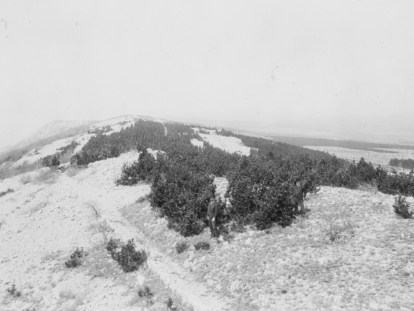From Stone to Wood
Reforesting in the heart of Europe.
The Karst forest in the heart of Europe extends across the border between Slovenia and Italy. It’s lush, dense and wild thanks in large part to a reforestation plan that was implemented by the Austro-Hungarian Empire in the mid-1800s.
But it hasn’t always been this way. Over 200 years ago, this area suffered from severe desertification as humans cut huge swaths of trees without regulation. What had been described in fourth-century Roman documents as densissimis sylvis–an extremely dense forest—was now die felsige Wüste—the desert of stones—in the words of Roman Emperor Maximilian I of Habsburg. The Karst region is barren and rocky, with caves, sinkholes and underground rivers. Strong winds, cold winters and arid landscapes made it difficult for vegetation to survive here.
Forester Josef Ressel (inventor of the screw propeller) was put in charge of finding a new way to produce timber for the construction of ships for the Austro-Hungarian Empire. It was his idea (though others had the same one) to reforest the Karst, which was part of the Empire’s territories. Ressel’s studies began around 1820, and in 1840 plantations were created on the Karst plateau around the port city of Trieste.
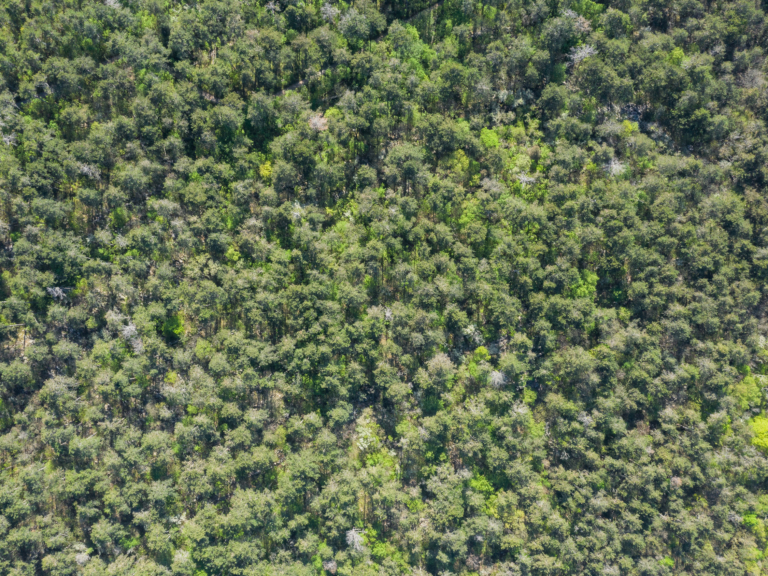
In spring, the new bright green leaves of native vegetation contrast with those of the evergreen pines and the gray of older, dry pines. Santa Croce, Trieste, Italy. Photo: Schirra/Giraldi
The Karst Reforestation Plan was presented at the 1900 Paris Exposition and awarded the top prize for innovation in forest management. To date, it is the first and largest forest management plan in documented history—and an important example of the broader effects reforestation can have on the environment and local society.
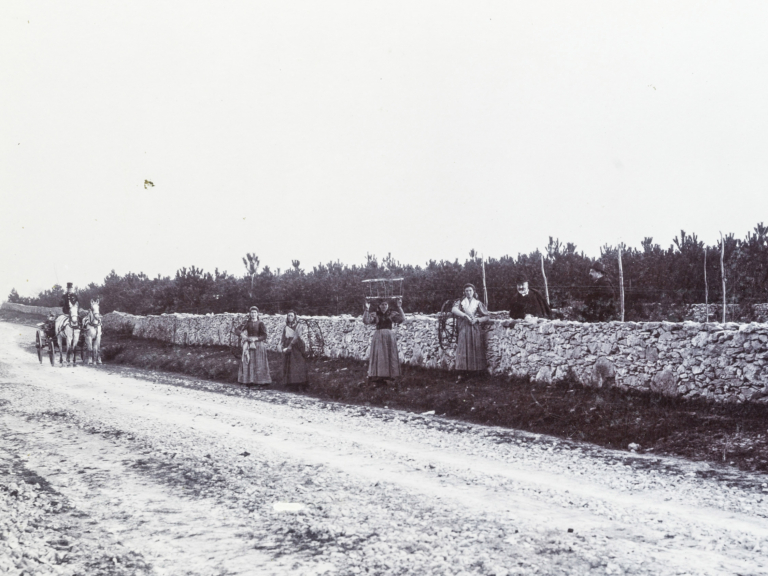
Residents of Contovello, Italy, stand by the dry stone walls erected to protect the village (and young trees) from strong winds. Photo: B. Circovich
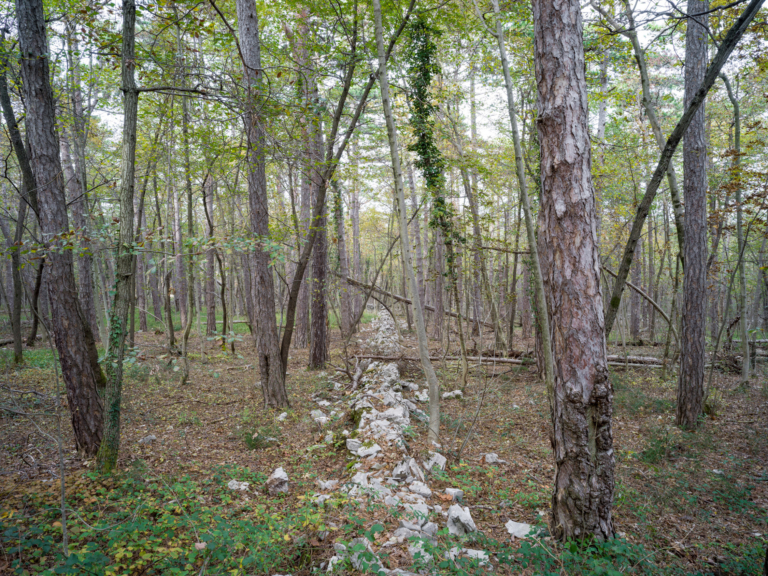
The forest near Contovello, Italy. Photo: TK
Since its first introduction, Karst reforestation efforts have created 60 million holes to plant new trees and scattered more than 6,000 kilograms (over 13,200 pounds) of resinous and broad-leaved seeds. Over 100 kilometers (more than 62 miles) of dry stone walls have been erected to protect the budding plant lots. Records were meticulously kept, with folders dedicated to working hours and roles. There are journals documenting income, expenses, private and public financing, and invoices from nurseries, and on-site transport. Annual reports of the results were drawn up. An existing presentation that was used to present at the Paris Expo features specific methods and purposes, and several photo albums were organized, including documentation of the region before and after the interventions.
The project presentation states: “Thus, it is clear that the forest mitigates the extremes of temperature, especially in summer … increases the humidity of the air, prevents the drying up of the soil, and therefore increases its fecundity, breaks the strength of the winds and thereby defends the vegetation and soil from the many harmful effects of the same. Furthermore, it is beyond doubt that in summer … atmospheric precipitates must take place more easily than under similar circumstances on barren ground and even covered with low vegetation … while wooded spaces make them more disposed to condensation as a result of the humid and fresher air.”
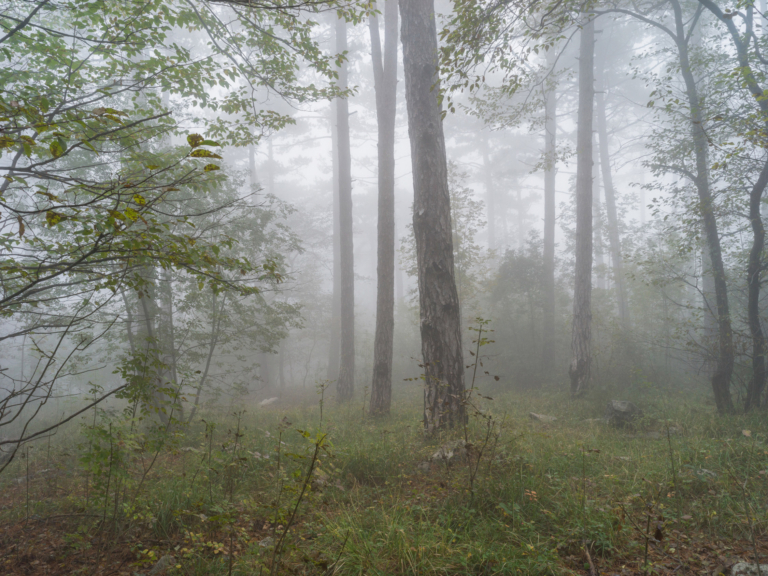
A misty morning. Contovello, Italy. Photo: TK
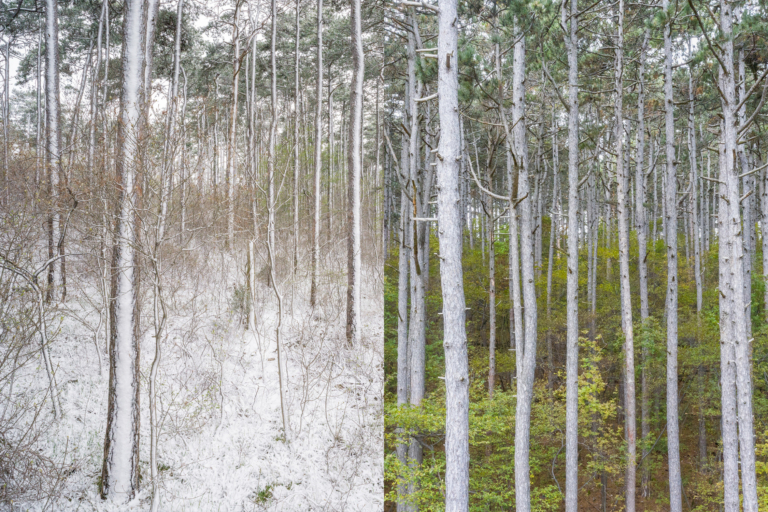
Koper, Slovenia, is one of the very few areas where the original reforestation planting is still present. Reforestation efforts began here in the second half of the 19th century, and the contrast is clear between the old and new forest. Photo: TK
In a deserted and rocky place like Karst, a pine can take 20 years to reach a height of 5 meters (over 16 feet). Even if you don’t see them with the same sense of admiration as a thousand-year-old California sequoia, the Karst trees are strong with a vitality and energy powered by the rock.
Yet, few locals know that their forest exists due to this project from nearly 200 years ago. When our mothers heard that we were working on this, they told us that our grandparents planted pines in the Karst region without ever knowing it was for a reforestation project. The trees they planted were not part of the original reforestation project, but instead had a hand in repairing the damage caused by fire and human events, like the first and second World Wars. The pines our grandparents planted were for the forest of today.
Entire villages were involved in the planting operations and earned wages through their work. The strongest men dug holes in the rock, the boys brought earth from the sinkholes, the women took care of the planting, and boys and girls brought water from the village well. The planting was methodically done on a square grid that stands out even today from the spontaneous growth of native vegetation.
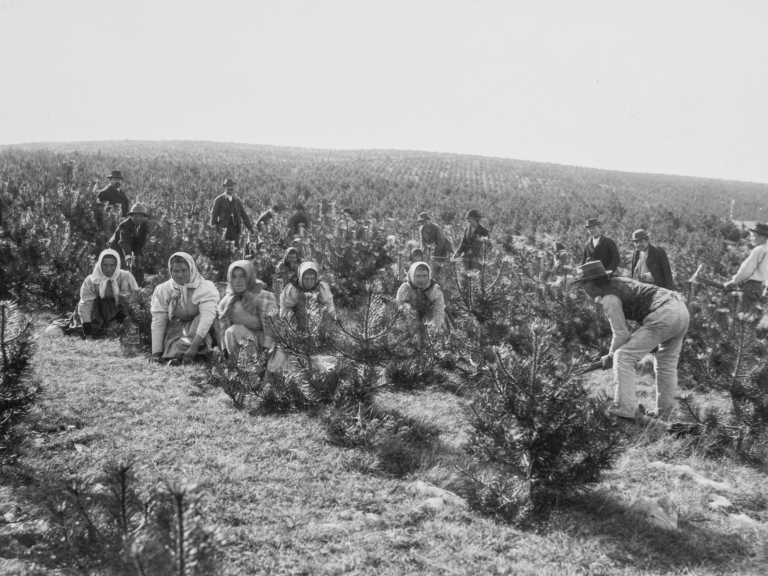
It takes a village. Residents contribute to reforestation efforts in the Bazzoni forest, Italy. Photo: B. Circovich

A black pine stands among native vegetation. Black pines are slow growing at first; After 7–10 years they barely reach 1 meter, over 3 feet. During this period, they grow lateral branches that almost touch the ground, helping to protect them against Bora winds. Lanzi Forest, Italy. Photo: TK
The results of this plan, nearly two centuries later, help us understand the potential of reforestation in inhospitable environments—conditions that we can only imagine for future plans in Europe and around the world.
Today, the forests of Karst are unmanaged in an effort to improve biodiversity. Pines die naturally and don’t easily reproduce, while native species are faster to develop. Studies support this important independent system, and the ways in which it is enriched without human intervention. The area can be visited through a rich network of paths, while some spots remain totally isolated, allowing nature to develop without any human interference.
Crossing the forests of the Karst is a journey through culture, heritage, landscape, environment and history. But it can also be seen as looking at the future. These forests are proof that our actions today can have important effects on that future.
As German naturalist Emil Rossmässler said after the Paris report, “When the cut tree lies next to the root, and axe and saw cut it, it isn’t only then it begins to be useful to us. Its greatest usefulness ends with its life. What we do from its wood does not equal the importance of it, to that it contributed to the interest of our life as a living tree in the company of others.”
